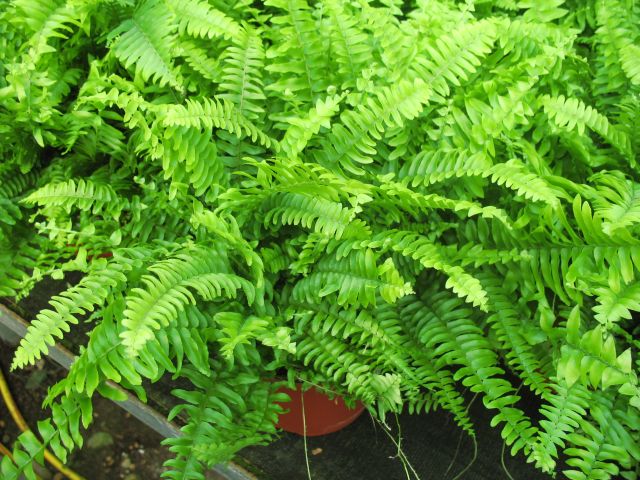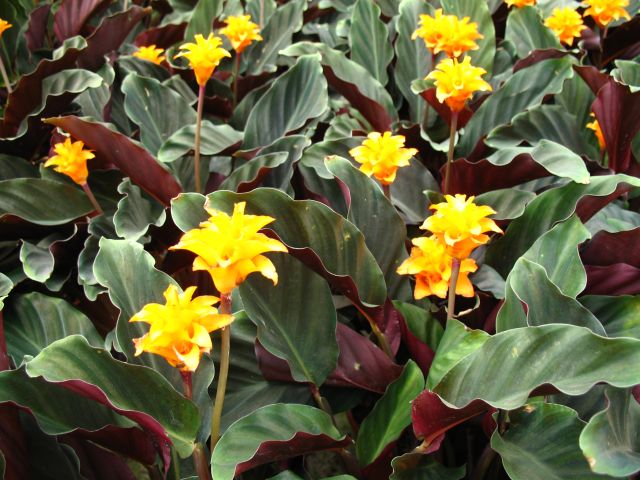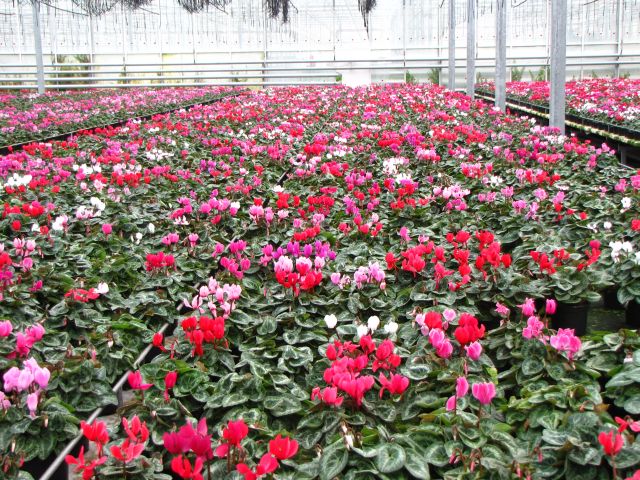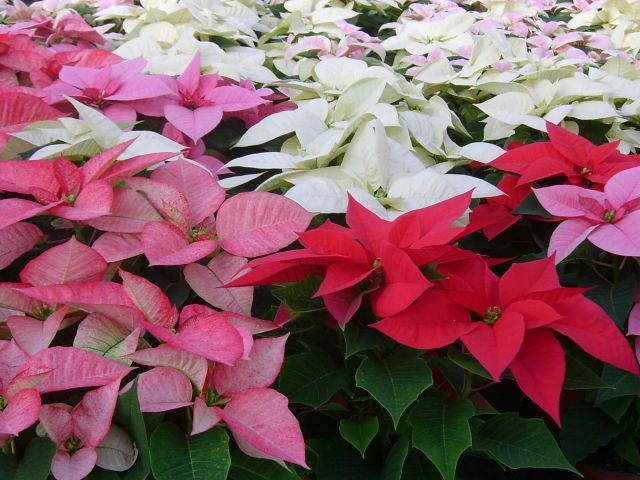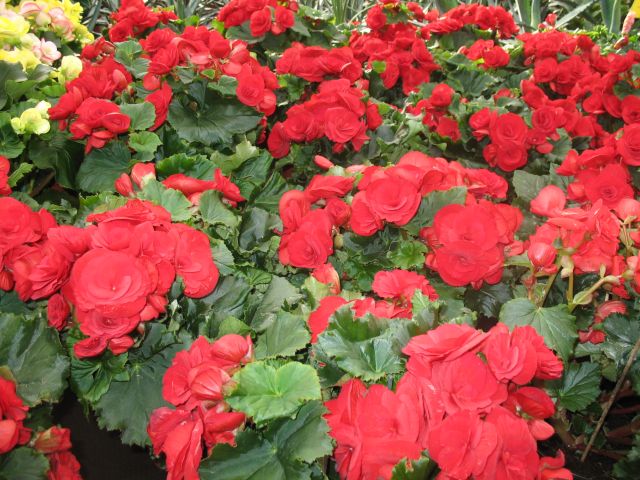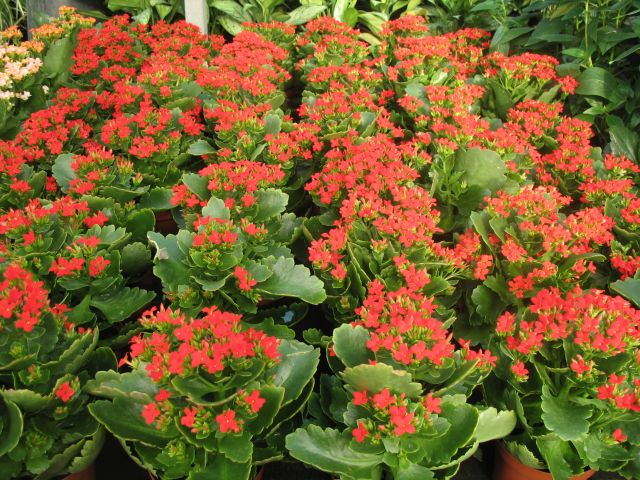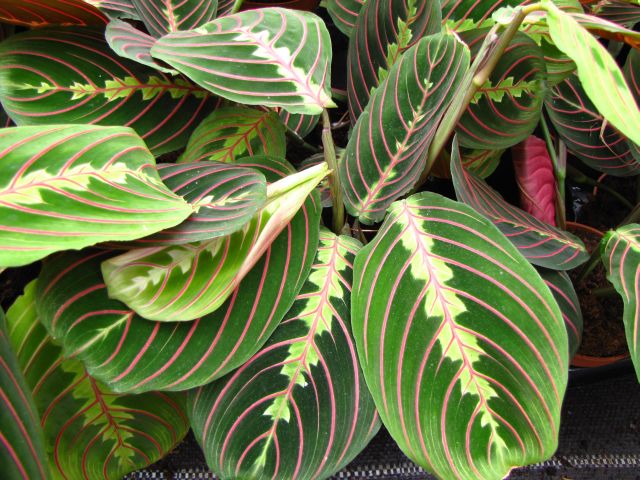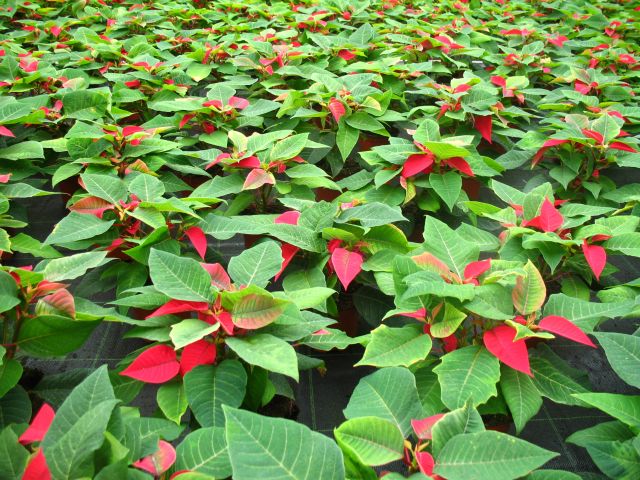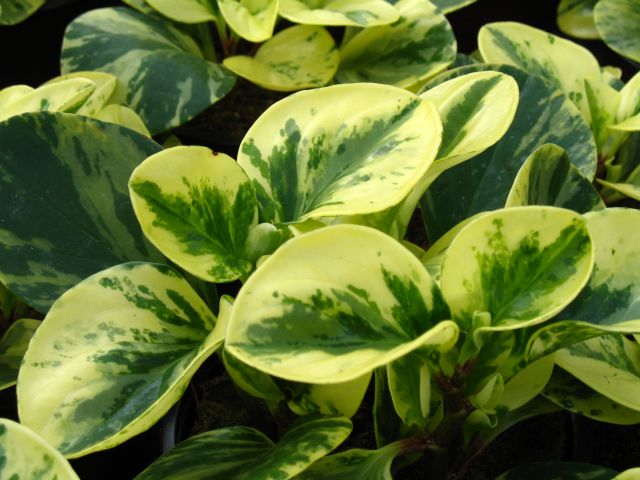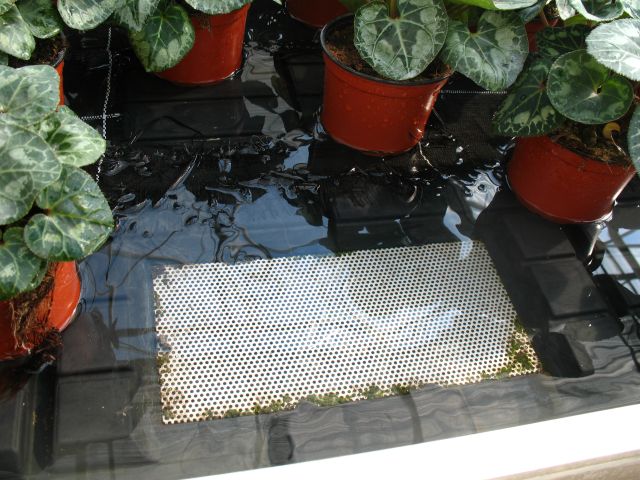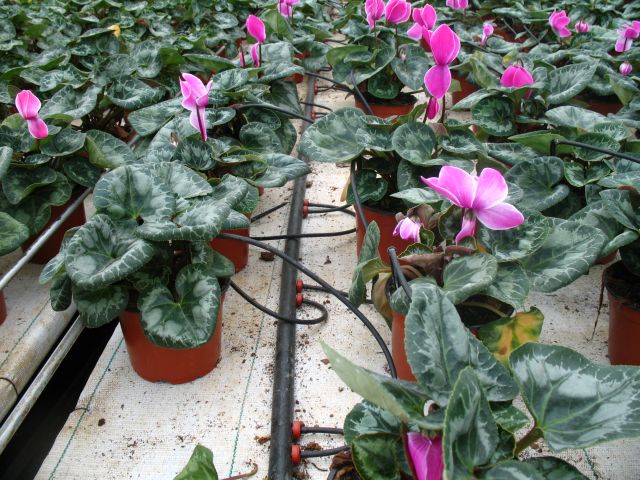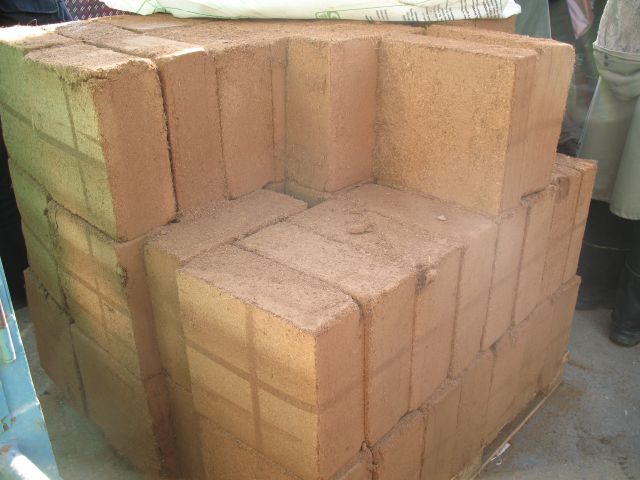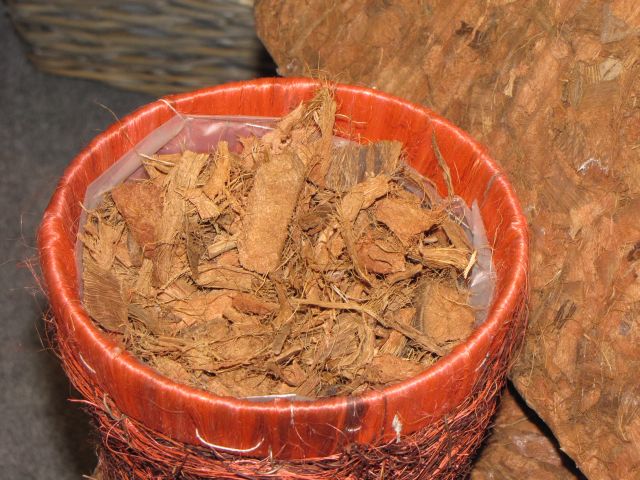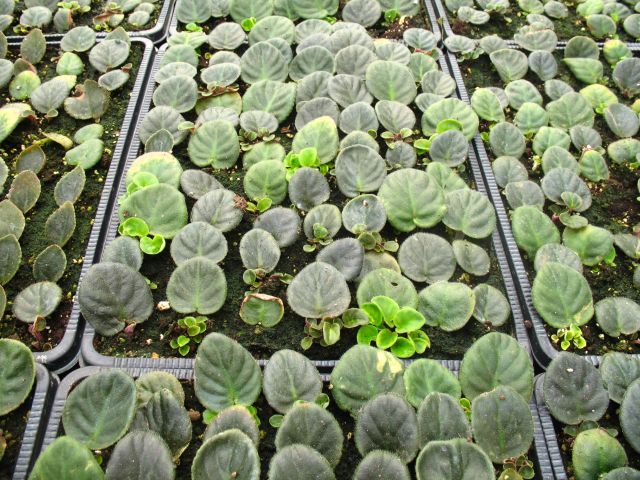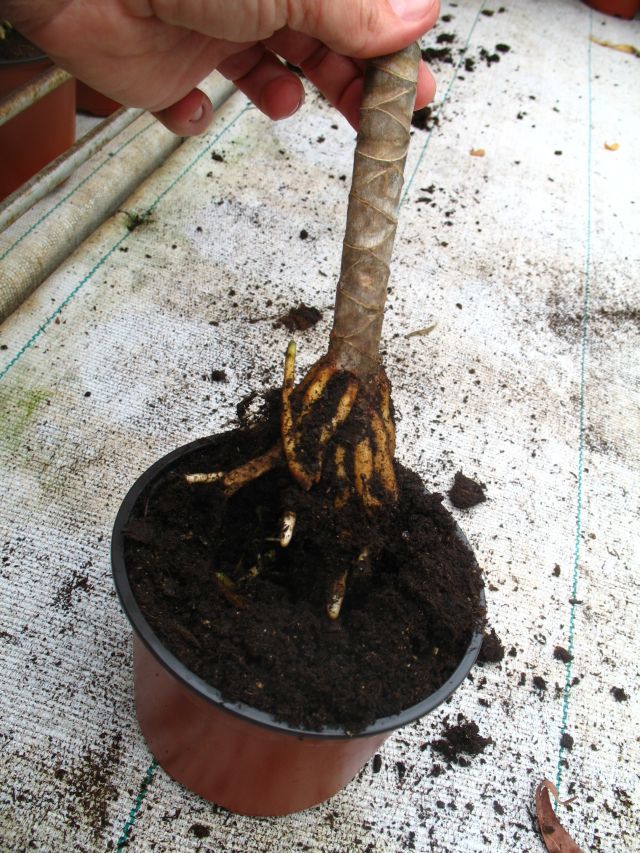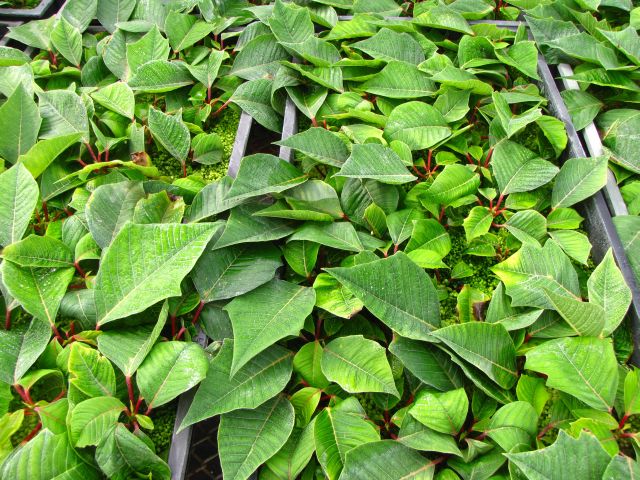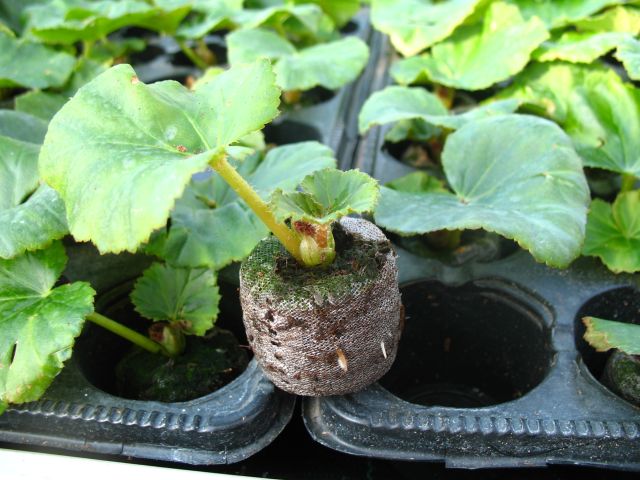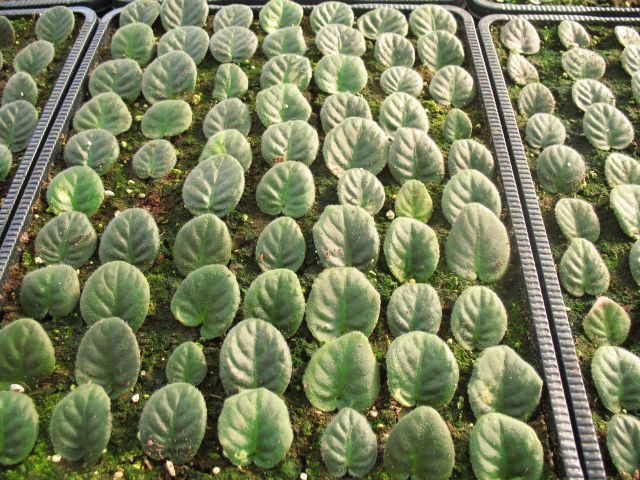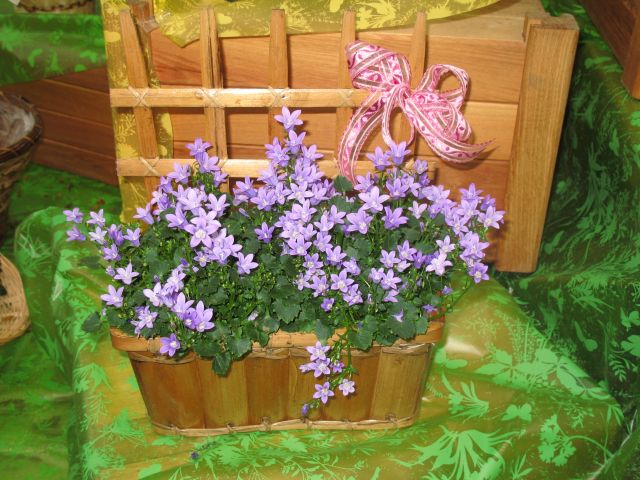5. Cultivation of potted ornamental plants
Authors: Andrea Tilly-Mándy, Márk Steiner
5.1. Definition of potted plants
Potted plants are the plants for decorative purposes indoors in residences and family homes. Most of them originate from tropical or subtropical areas, while some species are native to the Mediterranean region. Plants from the temperate zone are very scarce. Predominantly frost susceptible plants, therefore their cultivation usually take place in greenhouse or plastic tunnel. These plants are released into the market in pot or small container.
Ornamental values of potted plants are usually the decorative foliage or flower, however sometimes fruits are also decorate. The species grown for foliage are the foliage potted plants, while those ones, which decorate with flowers, are forming the group of flower potted plants. Those plants, decorate with their fruits are sorted in the foliage group by some authors, while others rate them into the group of flower potted plants.
Most commonly cultivated foliage potted plants are tolerant, long-living interior plants. These including some species from the genus Ficus (F. elastica, F. benjamina, F. lyrata, F. binnendijkii, F. pumila), Philodendron ( Ph. scandens, Ph. erubescens, Ph. bipinnatifidum), Dieffenbachia (D. amoena és maculata), Aglaonema, Syngonium , Dracaena (D. fragrans, D. deremensis, D. marginata) and its cultivars, besides cultivars of Monstera deliciosa, Codiaeum variegatum, Scheffelera arboricola, Nephrolepis exaltata, Sansevieria trifasciata and S. cylindrica , and some palm species: Phoenix canariensis, Ph. roebelenii, Trachycarpus fortunei, Washingtonia filifera, Howea forsteriana, Dypsis lutescens, Chamaedorea elegans.
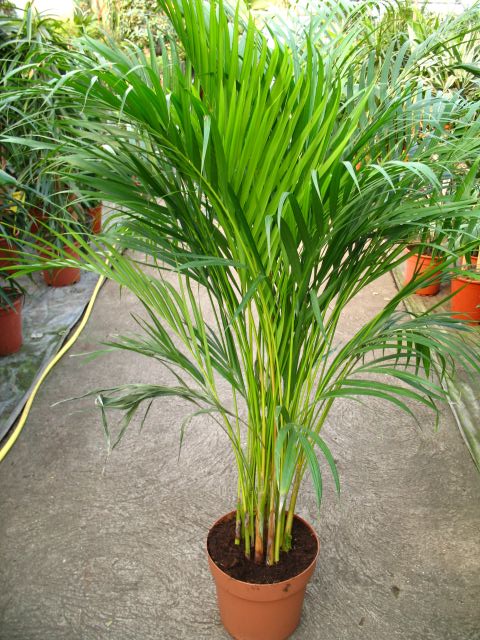
Chrysalydocarpus lutescens
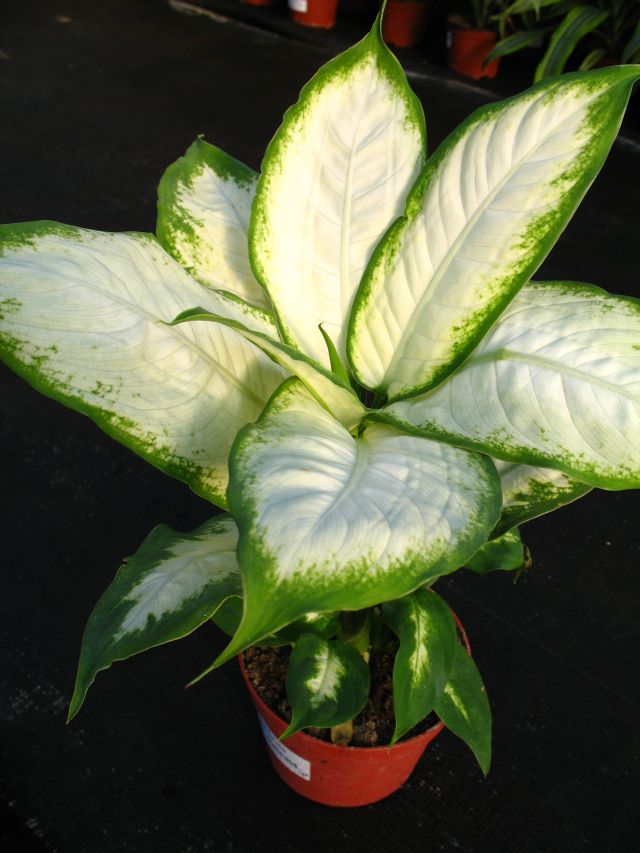
Dieffenbachia maculata 'Camilla'
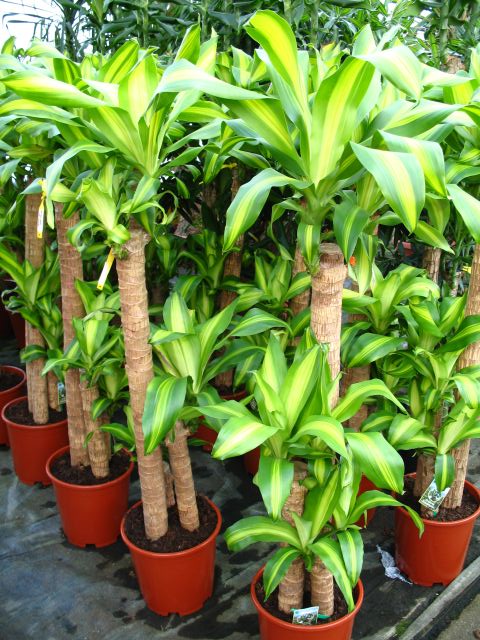
Dracaena fragrans 'Massangeana'
Nephrolepis exaltata
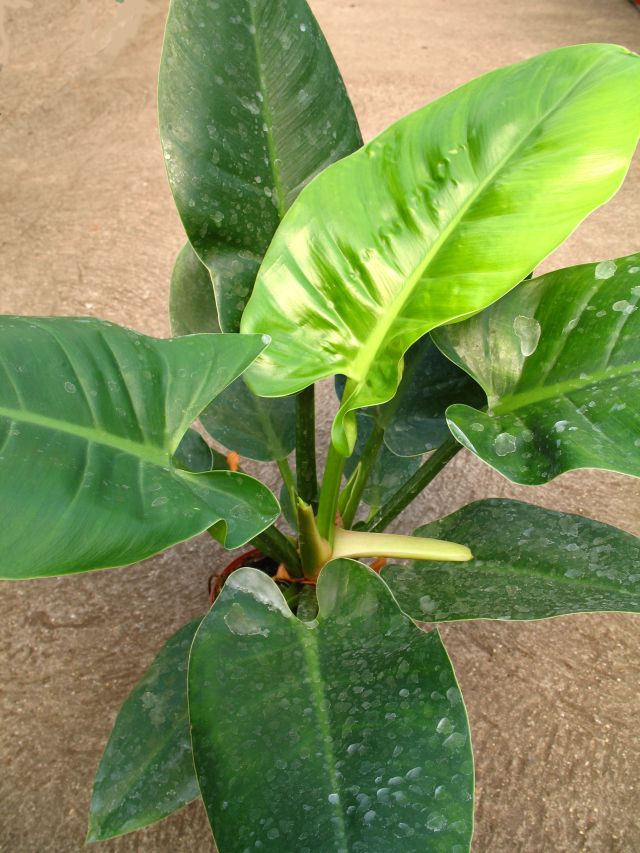
Philodendron erubescens 'Emerald Green'
Besides highly tolerant plants there are also less tolerant species and cultivars as a range supplement of the market with a main value of smart foliage in various colours. These taxons: Cordyline (C. terminalis, C. australis) cultivars, Aglaonema commutatum cultivars, Araucaria heterophylla, Fatsia japonica, Peperomia cultivars, and Calathea, Ctenanthe, Maranta, Stromanthe species and cultivars from the family of Maranthaceae.
Calathea crocata
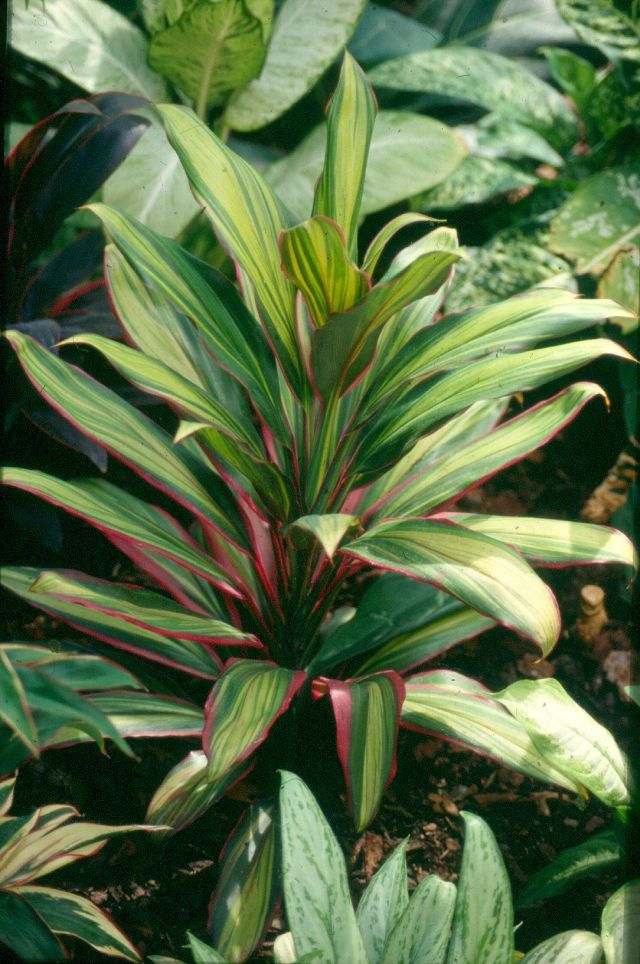
Cordyline terminalis 'Kiwi'
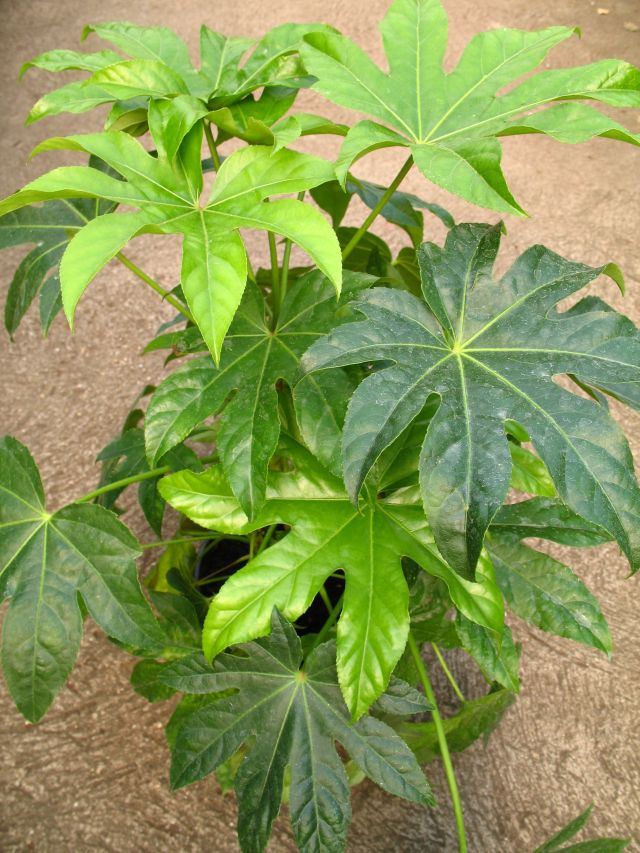
Fatsia japonica
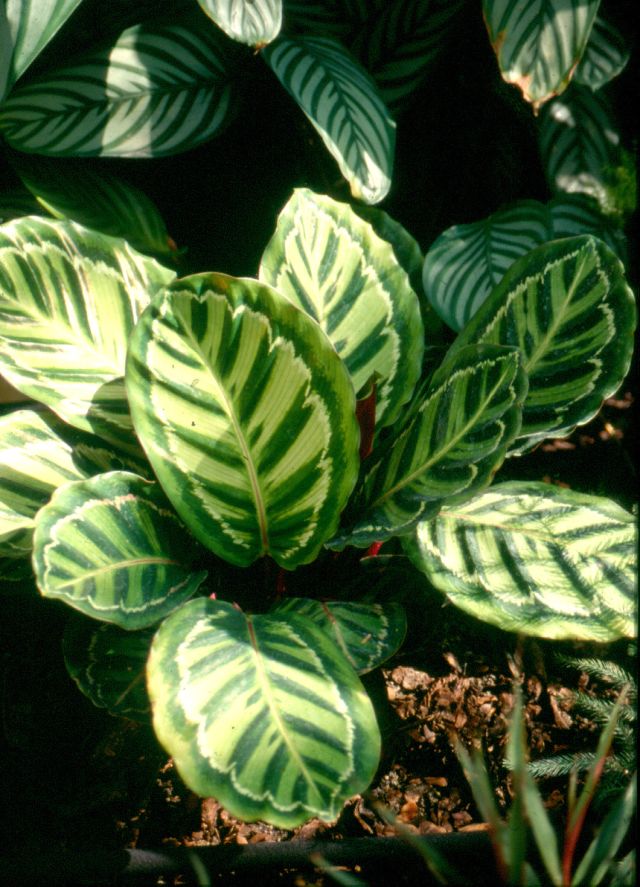
Calathea makoyana
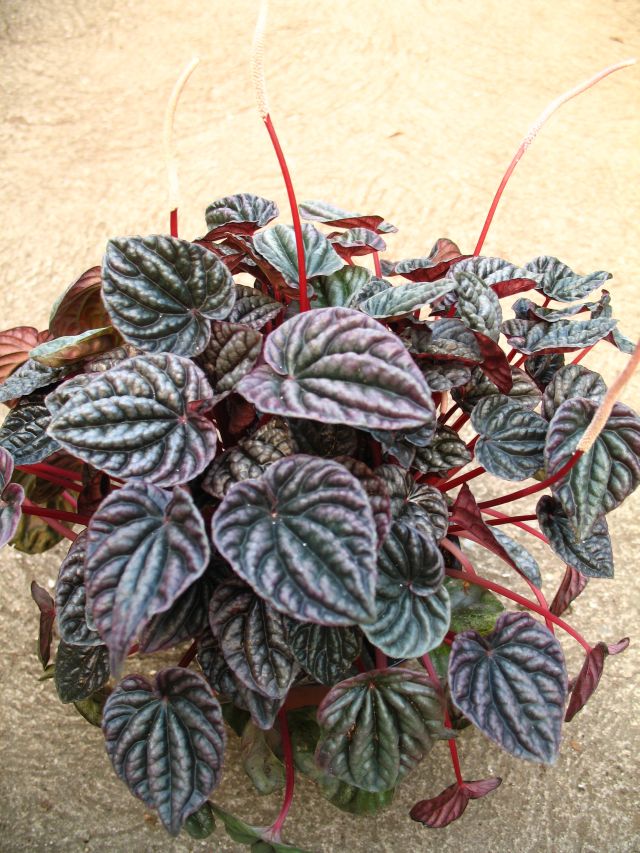
Peperomia caperata 'Teresa'
From the flower potted plants those are cultivated in great volumes which blossom period is long or related to a season. This includes the following species and varieties: Cyclamen persicum, Euphorbia pulcherrima, Begonia elatior hybrids, Phalaenopsis hybrids, Kalanchoë blossfeldiana, Primula elatior hybrids, Saintpaulia ionantha, Chrysanthemum × grandiflorum and Hydrangea macrophylla.
Cyclamen persicum
Euphorbia pulcherrima
Begonia × elatior hybrid
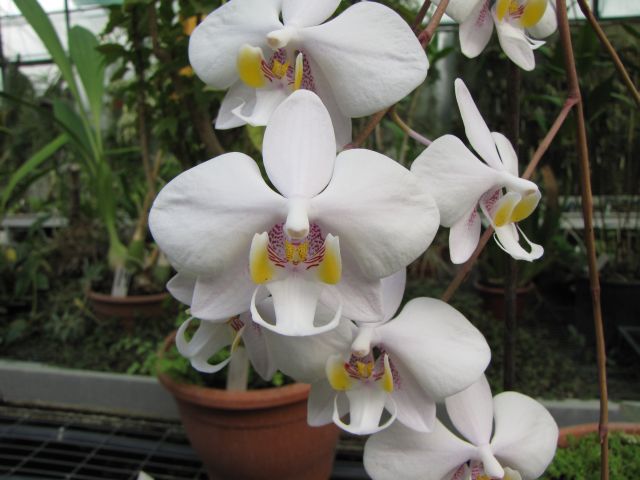
Phalaenopsis hybrid

Saintpaulia ionantha
Complementary plants are: Anthurium andreanum and A. scherzerianum cultivars, Rhododendron simsii hybrids, Erica species and hybrids, Impatiens New-Guinea hybrids, Sinningia hybrids, Spathyphyllum wallisii cultivars, and several species and cultivars of bromeliads.
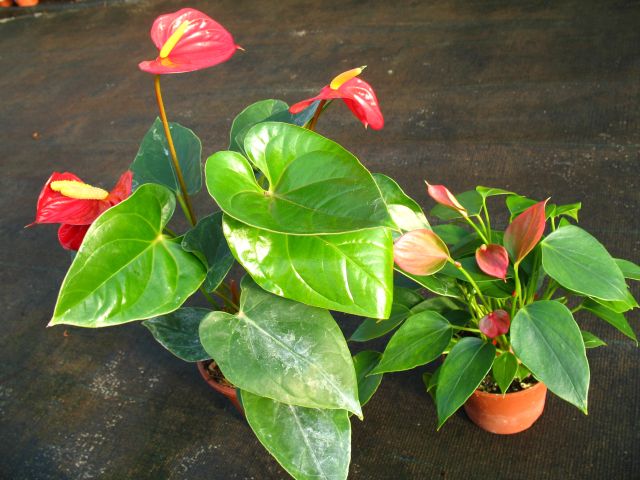
Anthurium andreanum hybrid
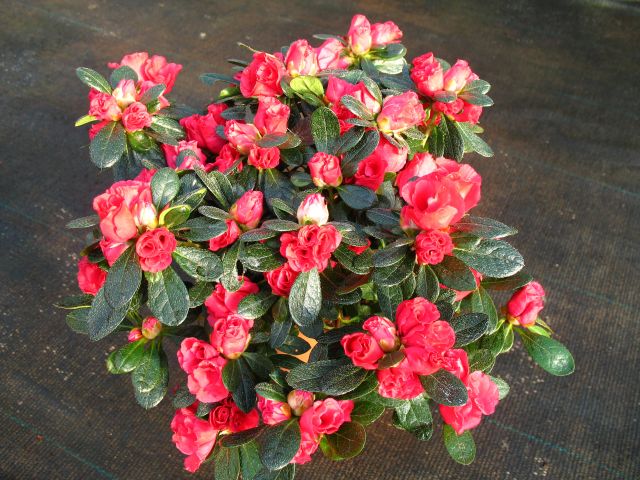
Rhododendron simsii
Impatiens New-Guinea hybrid
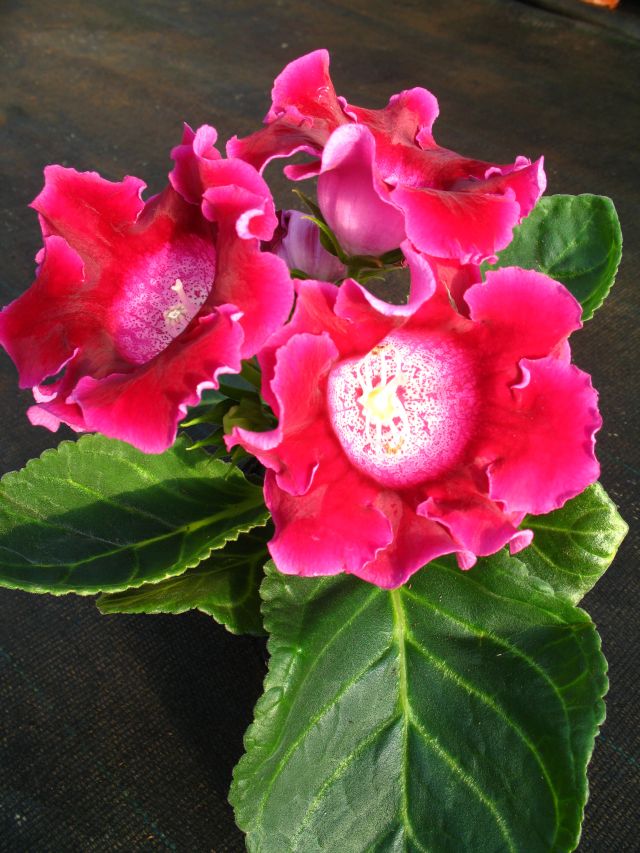
Sinningia hybrid
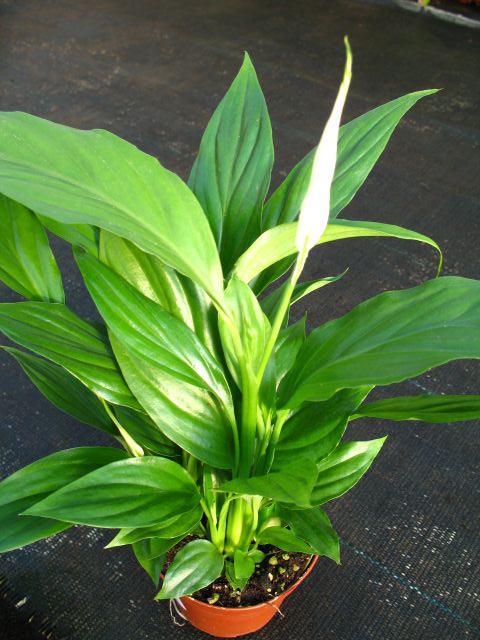
Spathiphyllum wallisii
Species and cultivars of Fuchsia and Pelargonium are also cultivated in pots, however these are utilized as balcony plants (outdoor), so explanation of their cultivation can be found in that chapter.
5.2. Environmental requirements of potted plants
Basically environmental requirements of potted plants are sourced by geographical origin of the plant. In cultivation, growing optimum of the plants is tried to provide. For tropical plants it can be rather expensive during wintertime, therefore ongoing researches focus on the response of plants, when conditions differ from the optimal, for cost saving purpose.
5.2.1. Temperature
Cultivation of the majority of foliage plants is around 20 degrees Celsius. At wintertime plants grown between 18-20 °C during the day, while between 16-18 °C are optimal at night. With the growing of light intensity, daily temperatures can be increased to 25 °C; above this plants can be damaged. Species origin from the Equator (e.g. Codiaeum) are able to resist higher temperature, but in Hungary it is always coupling with high radiation, that is why greenhouses has to be shaded. The optimal temperature for species from temperate zone (e.g. Hedera) is between 16-18 °C, which is difficult to provide in summer. Cultivation of cold house plants were originally held in wintertime with keeping low temperature (cost saving), but this increased the duration of the culture. In modern growing plant cultures are continuosly kept in the tempeature range of active growing (Phoenix , Trachycarpus, Washingtonia).
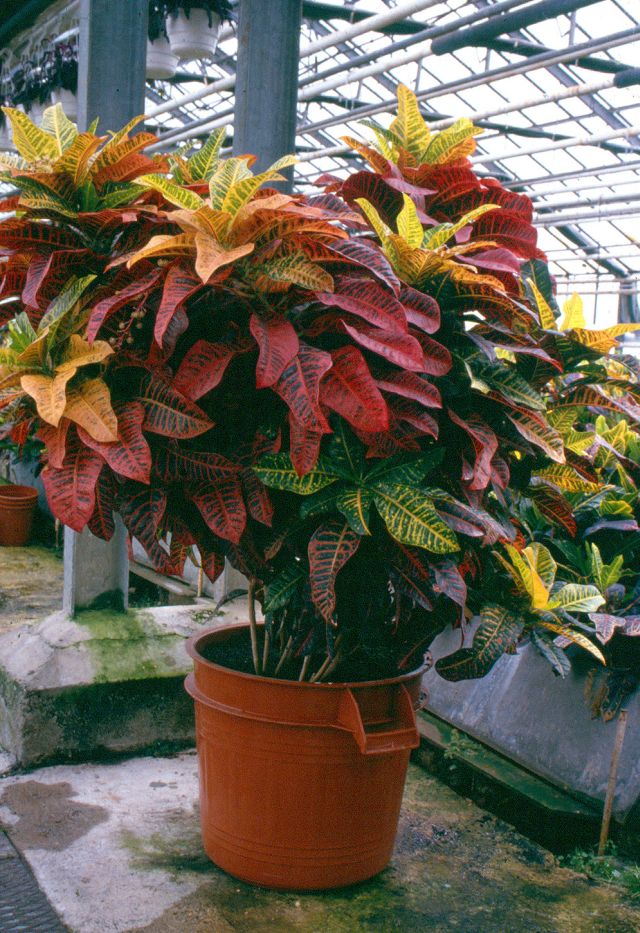
Codiaeum variegatum var. pictum 'Bravo'
Hedera helix
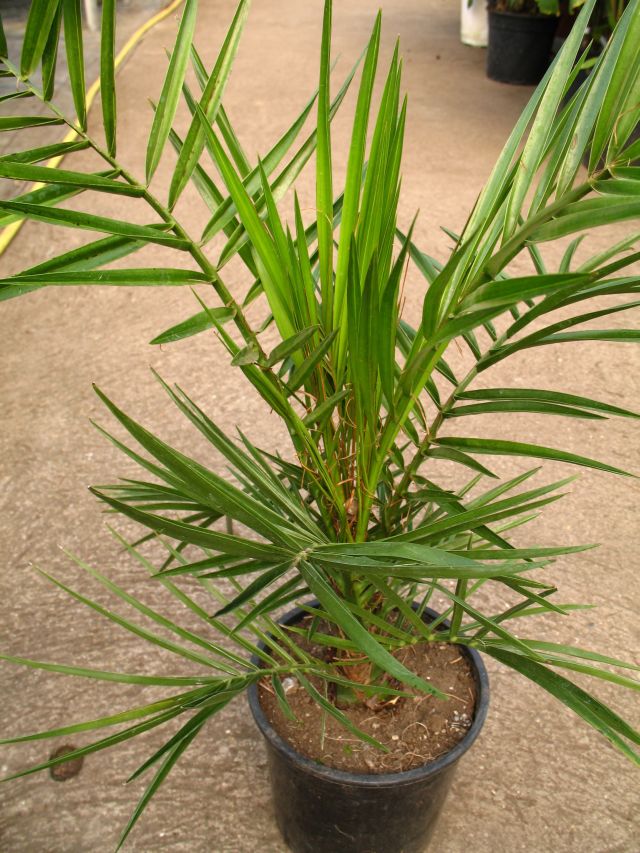
Phoenix canariensis
The temperature need of growing and blooming is different in flower potted plants. After higher growing temperature, lower levels required, which positively affect quality, permanence and colour of the flowers. Cyclamen needs low temperature, between 20-22 °C during the growing period. It is difficult to obtain in summertime, when high temperature can lead to developing big, elongated, deformed leaves. The optimum is between 12-16 °C when blooming. Flaming Katy, which is a plant of tropical origin, needs steadily high temperature around 20 °C, which is not allowed to decrease permanently below 16-18 °C even at night. From the beginning of blossoming 16 °C could be kept, which make flowers colours more intense. A short fall in temperature doesn’t cause any problem. However, this plant develops well at 25 °C when light intensity is high. The poinsettia has also tropical origin. As general 18 °C is optimal for growing, but it may be differs between cultivars and growing phases and can be increased to 24 °C. Over 26 °C disorders can be found in blossom developing. From the colouring of bract leaves temperature should be reduced to 18 °C in day and 16 °C by night, which will result in more intensive colour. Ready to sell plants can be stored at lower temperature, 12-15 °C. Since several years successful experiments were going on about the effects of lower growing temperature. The new technology reduce plant size and make them more compact, with reduced or even without dwarfing treatments, while duration of the growing period increase.
Kalanchoë blossfeldiana

Effects of lower growing temperature on poinsettia
Hybrids of Begonia × elatior have also high temperature need, with an optimal temperature between 18-20 °C. Keeping over 25 °C result weak plant tissues. Below 18 °C is the preferred temperature for blossom developing, therefore steady low temperature at vegetative growth is (spare with heating) unfavourable. From the appereance of sprouts temperature can be reduced to 16-18 °C, which help colours to be more intense. Plants of mediterranean and temperate origin often winter-hardy, with low temperature requirement, some growing phases are done outdoors. Optimal growing condition for potted chrysanthemum is 16-17 °C, after potting, when root system develop around 20-22 °C at sunny and 18-20 °C at gloomy weather, with around 80 % relative humidity. Afterwards night temperature should be reduced to 15-16 °C and humidity to 60 %. Marketing date of potted cultivars endure from early September to November. These cultivars are belonging to thermonegative and thermoneutral categories (see Chapter 4), which means that bud initiation occur below 15 °C or above 16 °C. Cultivars, which growed for All Saints Day are short-day plants, with 7-14 weeks of reaction time. Garden mums cultivars are not as sensitive to day length as other cultivars. Induction starts at early August thus overall growing can be held outside. Potted primulas need low temperature. From the beginning of the growing temperature they should be kept below 20 °C, which in Hungary can only be reached with shading and misting. From the beginning of September temperature should be reduced below 15 °C and kept for 6-8 weeks until transplants strengthen. Lower temperature (6-8 °C) delays development without making any harm to the plants. The next 4 weeks are the time for flower differentiation, when temperature shouldn’t rise above 15 °C, otherwise blossoming failed or flowers deformed. Ideal is 5-6 °C.
Garden mums
5.2.2. Light
Natural sunlight under continental climate in the temperate zone is too less in winter, while too much in summer. Shading is an easy protection against excessive light, however additional lighting is worthy to use only in those plant cultures, where the price is able to compensate extra outgoings and able to make the growing economical. There is no such a foliage potted plant culture in practice. Balanced plant development can be reached with reduced water and nutrient management in the low-light period. Species composing tropical floor vegetation have low light requirements (leaf begonias, Dieffenbachia, Maranta-species) accordingly planthouses have to be shaded from March to October to avoid sunburn. Species of subtropical origin (Ficus elastica, Monstera deliciosa, Philodendron scandens etc.) resist heavy light better, thus it is sufficient to shade from April to October. The greenhouse of plants that require high light (Codiaeum, palms) should be shaded merely against overheating at heavy direct sunlight in summer.
Maranta leuconeura 'Tricolor'
Cyclamen is originally a forest-floor plant therefore requires low light in cultivation, optimal is 10.000 lux light intensity. Flaming Katy is a high light plant with an optimal need of 20.000 lux however above this level shading is necessery. In winter 300 lux additional lighting should be provided. The species is an obligate short-day plant, for vegetative growth a 100-200 lux interfering night light is enough, for flowering day length should be under 12.5 hours (see timing in Chapter 3). Poinsettia also requires high light at vegetative growing phases, but shading is essential at strong light intensity. As an obligate short-day plant less than 12 hours day length is necessary for the induction of the generative phase. Hybrids of Begonia × elatior are shade plants and their greenhouses should be shaded from March to October. The hybrids are sensitive to intense light, where can easily get sunburn, while insufficient light cause foliage yellowing and elongated plants (in these days cultivars can be bought for outdoor growing, transplanting them is advisable in a semi shade location of the garden). This is a facultative short-day plant, bud induction occur under 13.5 hours light duration. By the way, the plant is able to bloom at long-day conditions if temperature remains steadily below optimal. Both technologies are used altogether in Hungary to generate blooming. Semi shade conditions should be provided as described above, from March to October, when cultivating Phalaenopsis hybrids. Potted chrysanthemum is a photopilous, but widely tolerant plant, which can develop adequately when less light is available. The stock for All Souls’ Day can be cultivated outside till early autumn, or in greenhouse, where shading should be done to avoid overheating. Depending on the cultivar, darkening should be initiated 6,5-7, or 9-11 weeks prior to marketing. Extremely cloudy days can result in early induction in this culture.
Poinsettia after the short-day treatment
5.2.3. Water and humidity
Potted plants have usually medium or high water requirement. Most of them can not resist hard (above 10 NK°) water moreover high lime content contaminates the leaves. Pre-heating to 20 °C should be done for tropical plants, as cold water cause root damage.
The rest of leaf potted plants has a medium humidity demand around 60 %. Humidity requirement for tropical forest-floor plants are higher, 70 % relative humidity is necessary to safely keep them. Succulents can resist lower, but some species are especially high humidity plants (Peperomia species, Pachypodium lamerei etc.). Providing enough humidity can be easily managed, rather too high humidity at low light periods can be a problem, which may affect higher chance of fungal disease attacks. Tropical plants can suffer from low humidity: leaf margins burn, invasion-like mite damage can occur.
Peperomia obtusifolia 'USA'
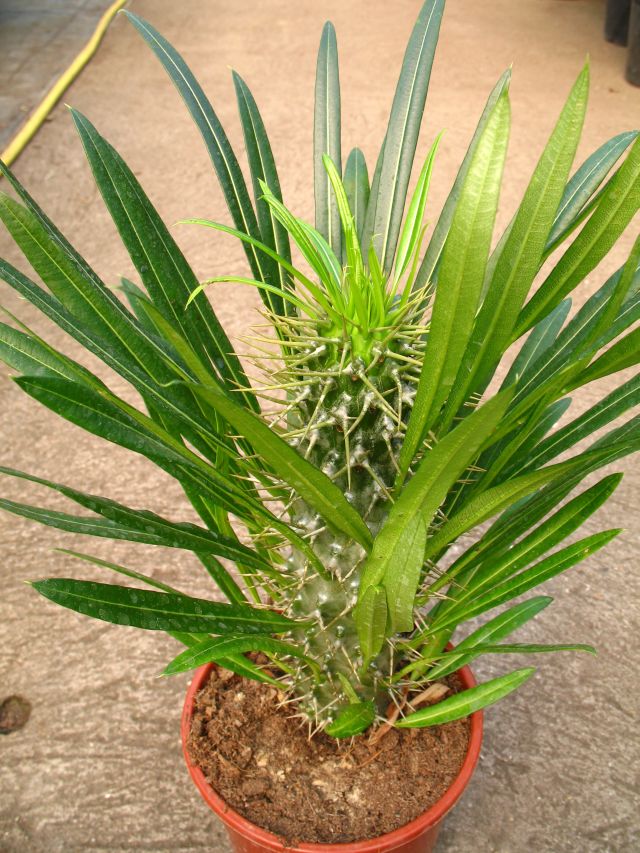
Pachipodium lamerei
Cyclamen have high water and humidity demand among flower potted plants. Water management can be held with drip irrigation system or subirrigation in order to avoid water getting into foliage and developing buds, which may led to grey mould (Botrytis cinerea) disease. The same problem can be observed when humidity is too high, in this case continuos aering, ventilation is the solution. Flaming Katy is not specially a water-loving plant, but needs a balanced water supply. Pre-heated water, applied by subirrigation (ebb- and flood system) is necessary to minimalise the possibility of fungal diseases. Suddenly evaporated humidity can be managed by ventilation. Poinsettia needs steady water supply, doesn’t resist either dry out or stagnant water. In modern cultivation subirrigation is the most adequate solution for this plant culture. There are ongoing researches aimed to reduce plant growth with moderate irrigation, but this method needs experience. For irrigation the use of pre-heated water is also advisable. Begonia elatior hybrids request high water supply and humidity. These plants are very sensitive to stagnant water and needs pre-heated soft water. Relative humidity shouldn’t drop down to 60 % during cultivation. Potted chrysanthemum also require high water supply. Growers have to take care of balanced water management especially when grown outdoors. At the edge of the plots drying out or salination can occur. Drainage can be used to avoid stagnant water. In greenhouses irrigation made by subirrigation, while outside by drip or micro-sprinkle irrigation. At traditional growing tube irrigation can be found in family farms. Potted primulas have medium water request and sensitive to over-watering, which cause chlorosis.
Ebb- and flood system in Cyclamen production
Drip irrigation of Cyclamen
5.2.4. Soil and nutrients
The base of potting medium is usually peat moss, which has an acidic PH. Additional ingredients and nutrients are added according the special need of the plant culture. A specific potting soil mixture used for foliage potted plants, which is nitrogen dominant, with 10-15 % clay content. Modern mediums include 5-10 % grounded coconut coir. For the export market clay fraction usually missing, beacause heavier medium makes the transport more expensive. Grounded coconut core have dual role. On the one hand – as opposite of peat – can re-wet easily, therefore it is possible to dry it out before shipment without any adverse effect. On the other hand it has an aeration effect, hereby able to satisfy the roots’ oxigen need. Potting mediums contain long term nitrogen fertilizer, which will be supplemented with mostly nitrogen dominant foliar fertilizers during the growing. Prefabricated potting mixtures are available for larger plant cultures (e.g. poinsettia), which are practical to use instead of uncertain results of mixing by your own. The optimal medium is slightly acid (pH 6-6.5), however some cultures prefer pH 5-5.5. Coconut-husk chips, consist of 1-2 cm pieces of coconut husks, is added for the medium of those plants, which root system have especially high need of oxygen. It is used in the growing of Rhododendron or Anthurium orchids. Some species have special nutrient requirements, which have to be added. Poinsettia is suceptible to molybdenum deficiency, which commonly occurs when pH is too low. It is required to spray with molybdenum containig micronutrient fertilizer during the growing period. Cyclamen requires available lime in the medium, which can be provided with 2-3 kg of fizzy lime (Futor). Root development is hampered at the lack of lime. There is no special nutrient demand of flaming Katy, acidic peat moss based medium of pH 5.5-6.5 is accepted for growing. However, it is very sensitive to high salt content therefore nutrient management should be performed with a maximum of 1-1.5 ‰ nutrient solution. The nutrient composition should be potassium based nutrient solution even during vegetative growth. Begonia x elatior hybrids – as other species of tropical origin – prefer airy, acidic medium. Special soil mixes are available in the market however peat moss with fizzy lime to obtain a medium of pH 5.5 and additional (2-3 kg) long term fertilizer is adequate for their cultivation and furthermore economic friendly. This is a salt sensitive plant; well balanced addition of 1-1.5 ‰ nutrient solution is preferred. Special medium is used for orchids. It is based on 1-1.5 cm pieces of fir bark or coconut husk chips and filled very shortly with nutrients (maxiumum 1 EC).
Coir bricks
Coarse coir fiber
Coir chips
Salt content can be increased to 1.5-2 EC at terrestrial orchids (Cymbidium), while epiphytic orchids (Phalaenopsis) are very sensitive. Potted chrysanthemums are not as susceptible for the medium, as the plant cultures discussed before. The base of the medium is peat moss, but consist black moss in higher rates. It is important to keep pH between 5.5 and 6, because chrysanthemum is sensitive to chlorosis. After potting higher dose of phosphorous (1 kg·m-3 Crystalon hydrostarter) is beneficial for better root formation. Nutrient fertilizers can be added to each irrigation, in a 0.5-1 ‰ solution. At the time of vegetative growing in summertime nitrogen should be additionally given: every 3rd-4th fertilization should contain solely nitrogen. Only clear water should be given at every 4th-5th irrigation to wash out accumulated salts. Potted primulas require airy, acidic (pH 5,5-6,5) potting medium. This species have low nutrient require and sensitive to salt. Potassium based fertilization is preferable, which helps blooming. Iron clorosis is a frequent problem, which can be solved with iron chelate usage. Salt accumulation in the medium causes leaf margin scorch.
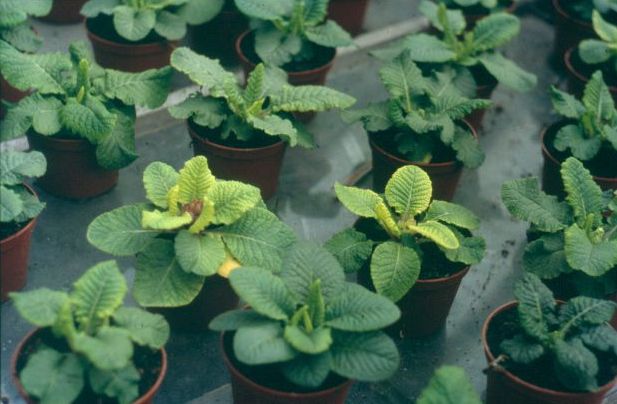
Iron chlorosis on Primula
5.2.5. Carbon dioxide (CO2) fertilization
Similarly to greenhouse cut flowers, potted plants also have insuffuicient carbon dioxide during wintertime (see Chapter 4). Good effect onBegonia × elatior hybrids and Kalanchoë blossfeldiana is evident, but unproved to effective on the development of Euphorbia pulcherrima. High costs of CO2 fertilization is impossible to fit into the sell prices in Hungary, therefore the method is not in practice.
5.3. Propagation of pot plants
Vegetative and generative methods also play a role in the propagation of potted plants, however always the economic benefit and the highest propagation rate is the determinant, when choosing between methods.
5.3.1. Seeding
Some massive foliage ornamental plants that give small propagation rate or can be only propagated generatively are propagated by seeding such as Philodendron bipinnatifidum and Monstera deliciosa. Both species are native to Middle and South America. The seeds are ordered from the plants’ origin at their ripening period. As germination rate of seeds are maximum 70 %, which rapidly decrease with the progress of time, they are air transported between paper to avoid rot. Seeding takes place in seeding tray in a medium of fine, fibrous acidic peat moss. Seeds will germinate after 2-4 weeks at 20 °C and from the appereance of the second true leaf seedlings can be potted. Like in other plants from the family Araceae, first leaves are heart-shaded, typical leaves appear from the 4th-5th true leaf. Nowadays, horticulturists do not deal with the seeding process, thus ordering seedlings to avoid risks of propagation. Furthermore different palm species are propagated by seeding. The seeds can also be ordered from the tropical mother tree stocks. Seeds will only germinate at high (28-30 °C) temperature; duration is one and half-two months. Seeds are soaked for 24 hours in warm (35 °C) water before seeding. Species have two germination types: adjacent and remote germination. The former type first develop a 3-10 cm long projection from the seeds (cotyledonary petiole), which produces roots and the foliage. The seeds of these species should be sown on a surface of 20-25 cm deep medium and covered with a 0.5-1 cm thick layer. Root and cotyl develop directly from the seed in the other type of palms. Seeds are covered with 1 cm thick layer to avoid drying out. High germinating temperature causes high costs, expect to summer, therefore usually seedlings from the mediterranean or tropical regions are ordered.
In the group of flower potted plants Cyclamen persicum, Primula, and Sinningia hybrids, and bromeliads are seeded. Finely screened acidic peat moss is the usual medium. Cyclamen, primula and bromeliads, which have baccate fruit (subfamily Bromelioideae) are sown precisiously in seeding tray, while Sinningia and bromeliads of capsular fruit (subfamily Tillandsioideae) are broadcast seeded into trays as seeds are very small and germination needs light. Seeding should be covered against drying out. Keeping the optimal temperature of germination is crucial, because even a 2-3 °C difference results hulting of the process and seedling become heterogeneous. This temperature value is 20 °C at cyclamen, 16 °C at primula, 25-26 °C at tropical Sinningia, 20-22 °C at bromeliads (Bromelioideae) and 22-25 °C at Tillandsioideae subfamily. The time of seeding should counted back from the planned marketing date, but it have to be taken into consideration that duration of the culture may vary depending on the different light circumstances of the season. Most of the potted plants are grown to a specific period and not present on the market in the whole year. Sales period of cyclamen lasts from mid-September (Mary-day) to early May (Mother’s day), the duration of the culture is 7-9 months – depending on the cultivar - therefore seeding is carried out weekly from January till November.
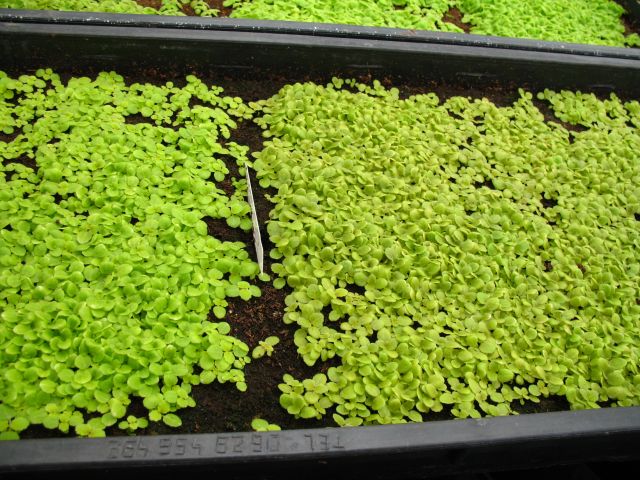
Sinningia seedlings
Cyclamen is a pseudomonocot with only one cotyledon emerging from the seed. Seedlings are highly susceptible for Fusarium infection hence hygienic protocols have to be observed correctly. Germination usually occurs within 3-4 weeks. Germination time of primula is 10-13 days at 16 °C. Sales period starts at January and ends at March, the duration of the growing is half a year. Usually sowed in June or July, when outside temperature is high, therefore the use of plant growth chamber is very important. Sowing medium should contain nutrients, as seedlings will develop there until reaching 4 true leaves. Sales period of Sinningia is in the spring (March-May), from which 5-5,5 months of culture duration is counted. While at the former two species only heterosis cultivars able to provide homogenous, first class product, in case of Sinningia seeds from own pollination can also provide good quality. Seeding should be performed periodically from October. Assimilation lighting is advisable for the seedlings during the lightless winter period. When germinating, small seedlings cover the ground as a moss, seedling transplanting into sowing trays should be done with a great care and expertise. Sales of bromeliads are continuous; seeding can be performed during the whole year. Germination needs 5-10 days (Bromelioideae) and 3-4 weeks ( Tillandsioideae). Early seedling development is very slow, first seedling transplanting can be done 2-3 months or 4-5 months after seedling, respectively. Pathogen free environment have accordingly great importance. Owing to slow early development the stock will surely be heterogenous therefore seedlings should be classified by size when first transplanted. At further growing plants of uniform size will be handled as an item.
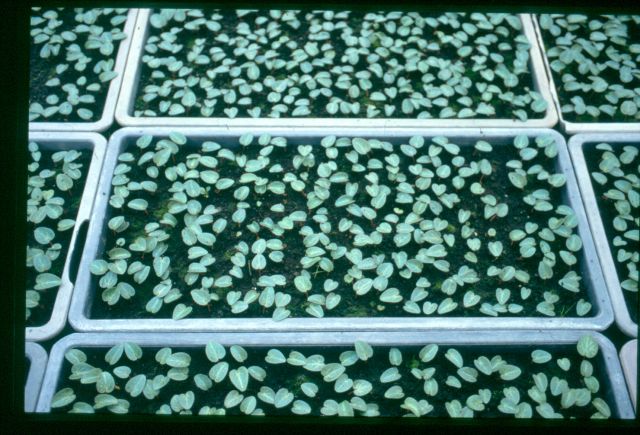
Seedlings of Cyclamen
5.3.2. Vegetative propagation
Most of the foliage potted plants are propagated vegetatively. Stem cuttings are used in modern growing; these can provide homogenous stock within the shortest duration. As a home method division (Nephrolepis exaltata) or stem cutting (Dracaena, Schefflera, Monstera etc.) can be used, but development of the offspring is slower. The foliage plant species, which having long internodes (Philodendron scandens, Epipremnum pinnatum) are exceptions, as they are propagated by stem cuttings, because roots and new shoots developing fast. Leaf cuttings are industrial methods of propagation by the date of Saintpaulia ionantha, Peperomia, leaf begonias and Sansevieria species.
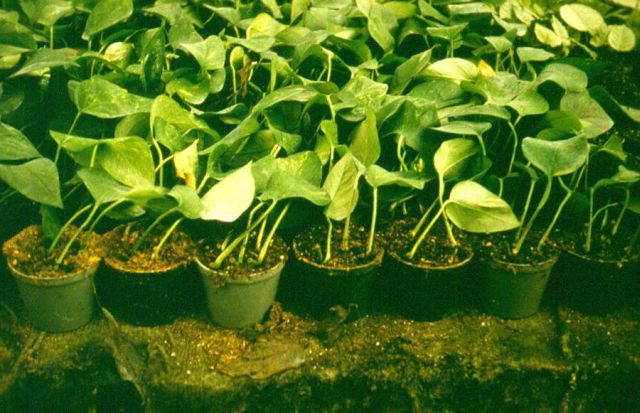
Propagation of Epipremnum
Leaf cuttings of Saintpaulia ionantha
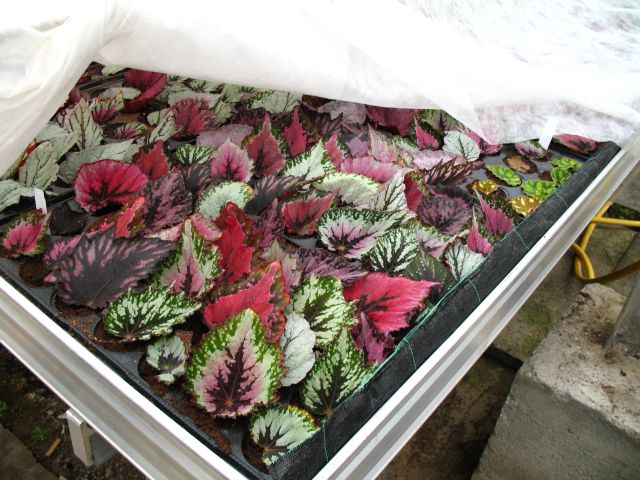
Leaf cuttings of begonias
In original growing mother stocks of foliage plants were maintained, while in modern growing this is not profitable. Nowadays source materials ordered through Dutch ditributors or directly from the origin of the plant (Africa, Southeast Asia, Middle America), where stock plants are grown under shelter canopies. Source material can be unrooted cutting[1], but in case of Dracaena marginata usually have 3-4 root initials. Only potting has to be done for the grower and to keep the plant until the root system spread out in the pot. Importing cuttings or semi-ready products from developing countries, where celeries and growing costs are lower is more profitable even with the long shipment. There is the same situation with the cultivation of Yucca elephantiphes. From the stock orchards sliced up canes are imported, where the bases are treated with rooting hormone. After potting rooting needs a month at 20 °C of sub-heating, than maintained at 18 °C. After young shoots developed a 20-25 cm in length, plants are ready to market. Shoot cuttings of other foliage plants are rooted in a medium contain 1:1 peat:sand mixture, keeping at 22-25 °C sub-heating, on 20-22 °C air temperature with 100% relative humidity. In this case rooting will be successful within 3-5 weeks. Rooted cuttings are transplanted into the pots, than growing time depends on the target size of the plant we would like to sell. Codiaeum variegatum, Ficus, Schefflera etc. species and cultivars are propagated like this. Shoots of Codiaeum variegatum and Ficus elastica contains high quantity of shoot sap. If the milky sap leaks out, rooting will be slow or even unsuccessful. To solve the problem cuttings are turned upside down, until the sap become solid on the cut surface. Another method is, when the base of cuttings is dipped into 40-50 ° C warm water, which contains fungicide.
Roots of Dracaena marginata
The most important flower potted plants, which are propagated by stem cuttings, are:Euphorbia pulcherrima, Kalanchoë blossfeldiana, Begonia × elatior hybrids, Hydrangea macrophylla, Rhododendron simsii and Chrysanthemum × grandiflorum. Modern, homogenous, high preformance cultivars are proprietary, cuttings can be purchased from the distributor companies. Usually, rooting requires 22 °C of sub-heating and 100% relative humidity, under these circumstances 3-5 weeks are enough for the process. There is a trend of reducing the cuttings in size (1-2 full grown leaves or a leaf pair), where accurately providing the environmental demands are crucial. Cuttings of poinsettia are not able tolerate shipment and storage well therefore it is advisable to put them immediately to the rooting medium. If cuttings were potted in April or May, growing plant can be a source of new cuttings, where it is important to avoid sap leaking. It is only permitted if written in the contract; in other cases home made cutting is forbidden. Depending on the cultivar, the cuttings of flaming Katy can be stored and transported within 3-6 weeks, if kept in 4-5 °C. The plant has succulent stem, therefore sensitive to rot. To prevent damping off the seedling, watering with fungicide is advisable.
Propagation of poinsettia
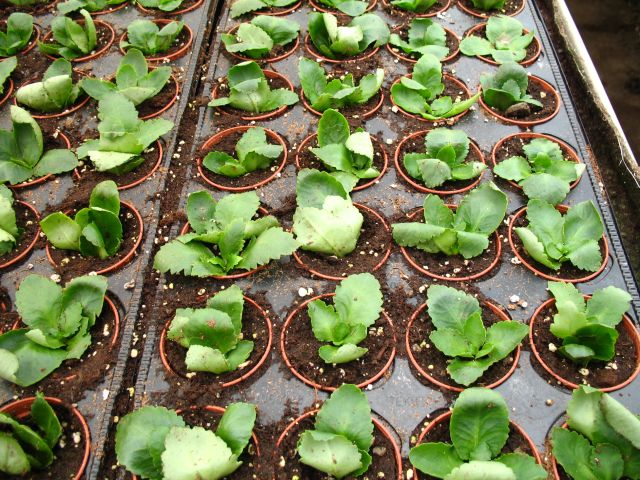
Cuttings of flaming Katy
Rooted cuttings of Begonia × elatior hybrid
Begonia × elatior hybrids require 24 °C subheating, which should be obtained at 20-22 °C air temperature during the two weeks of rooting time. High relative humidity and additional lighting in wintertime is important too. As a result of fleshy stem this species also tend to rot and get Botrytis infection, thus protection is required. A lower level of subheating (18-20 °C) and air temperature 16-18 °C is required for potted chrysanthemum moreover usage of hormone containing rooting powder is essential for successful rooting. Root growth is limited by overheating therefore greenhouses should be shaded from late spring. During root development, hortenzia require similar environmental conditions. The cuttings of the species, listed above can propagated into their final pots however horticulturists prefer seed trays to obtain better space utilization.
Propagating leaves of Saintpaulia ionantha and leaf begonias are from the middle leaf zone, cutted off with 1 cm long petioles and potted into seeding tray or propagating box. According to the tropical origin of both plants, root zone heating at 24 °C and 22 °C of air temperature is required. To avoid rotting of the fleshy plant tissues, cover with spunweb instead of polyethylene foil. Rooting takes 1.5-2 months, by the end offsets start to develop. Offsets of Saintpaulia can be separated singly for further cultivation, while at leaf begonias should be kept together to get shrubby, sellable plants as early as possible.
Leaf cuttings of Saintpaulia
Saintpaulia after propagation
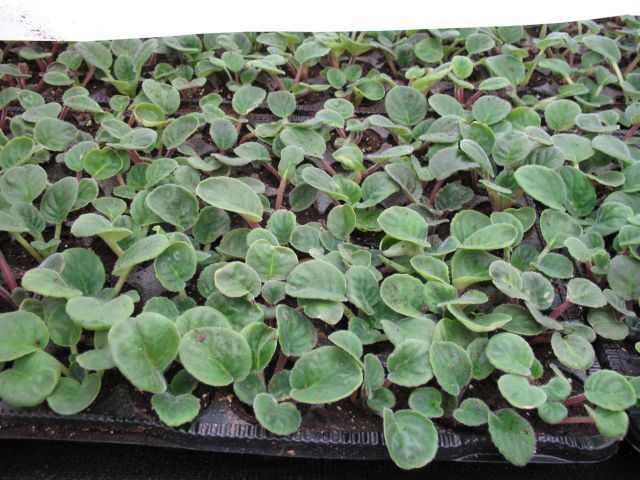
Re-rooted Saintpaulia plants
5.3.3. Micropropagation
Theoretically every plant can be propagated in vitro, but this is more custom made method, than original ones. This technique is only used, when results economical benefit. Micropropagation of vegetatively propagated crops is used when accelerating release of new cultivars to provide quick evaluation of the cultivar in order to start authorisation process. It is quite worthy for the breeder. At foliage potted group only plants of greater size ( Ficus elastica, F. lyrata, Philodendron erubescens, Dieffenbachia cultivars etc.) are micropropagated. There are two common methods: pure in vitro technique and its combination with conventional cutting. At the former case, plant parts, containing meristematic tissues are separated from the mother plant and propagated in sterile substrate with increased level of citokinins. Adventitious plants are separated in the dish and after rooting of shoots the plants are hardened and transplanted into pots for further growing. In this way one in vitro propagated plant produce one potted plant. At the latter technique in vitro produced sprouts are not or just partly separated, accordingly more adventitious plants are grown, rooted and hardened together and transplanted into larger 22-25 cm wide pots. The product will serve as a parent stock for further propagation. The growing shoots are cut off and rooted as a usual cutting (see above). The advantage of this method is the increased numbers of cuttings from the stock plants and the small size of cuttings, which results in a reduced propagation area. Continous cutting collection is crucial, as oversized shoots loose the ability of producing sprouts. In this method stock plants can be used for 1.5 year, than growed for bushy plant for the market.
Micropropagation of flower potted plants is merely used to generate and maintain superelit, virus free stock. Superelit mother plants of this propagation are kept at the facilities of breeding companies in mediterranean countries (Spain, Portugal, Italy, Greece, Canarian-islands, etc.). Further propagation held by conventional cuttings. The cultivars of Spathiphyllum wallisii are produced simply of micropropagation.
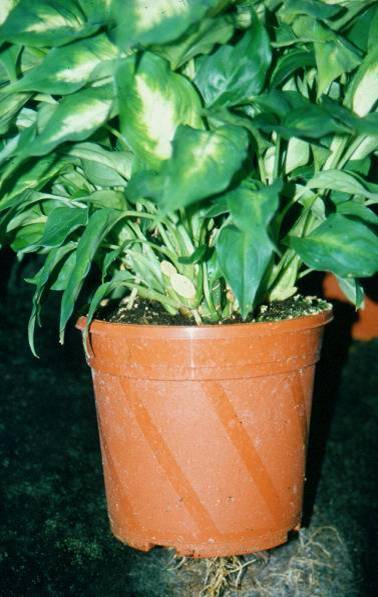
Dieffenbachia mericlone stock plant
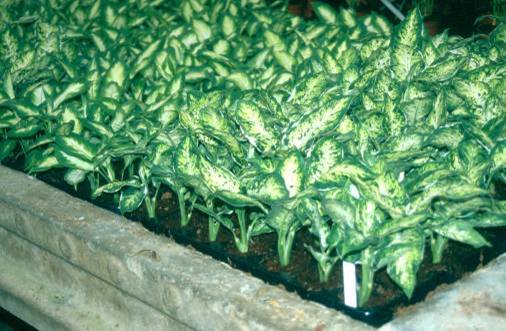
Dieffenbachia cuttings
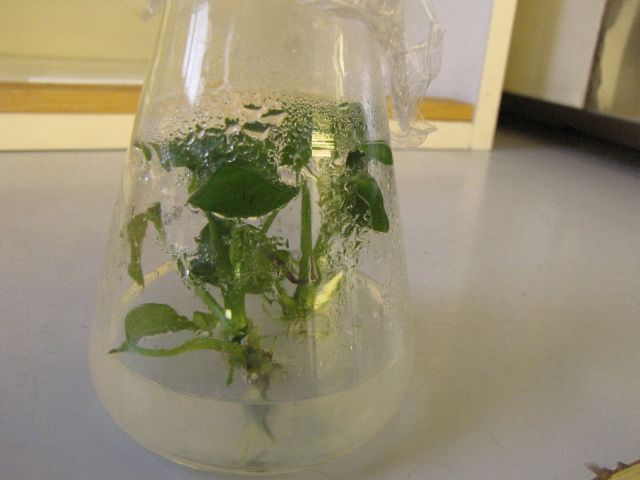
Spathiphyllum wallisii in vitro
There is a special group of micropropagated plants: the orchids (Phalaenopsis, Cymbidium). The seeds of these plants are very tiny, without endospermium, therefore seeding is performed under sterile conditions in vitro. Seedlings are cultivated until reaching a size to harden and transplant. Vegetative propagation of hybrids is performed in a so called bioreactor in liquid, continuous immersion culture. Plants for further growing are transplanted into solid media, where stem elongation and rooting takes place before hardening.
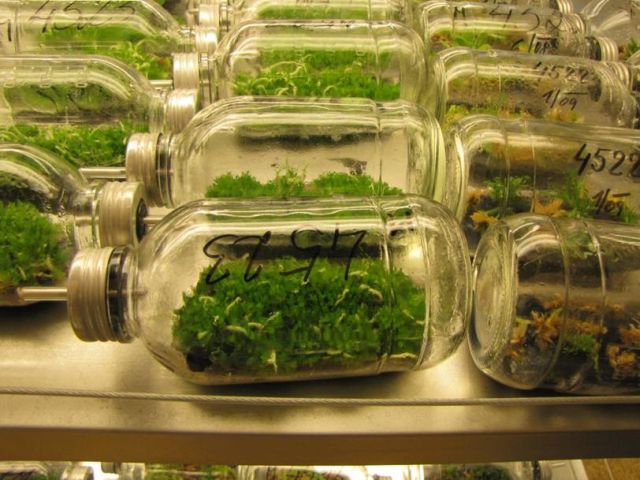
Orchid seedlings
5.4 Timing possibilities of potted plants
Timing has crucial importance in cultivation of ornamental plants. Demand for ornamentals is fluctual; highly increase around feasts and women namedays, while sale is problematic in other days. There is lower importance at foliage potted plants as timing based on the date of propagation and duration of the growing depends of the size to be saled. In addition demand is much balanced for them. There are three ways for horticulturists when growing flower potted plants: determination of propagation date at those species, which not react to other effects. Such culture is cyclamen and Sinningia. Distributors of the cultivars describe the time from indication to flowering, under optimal circumstances. Another way is the regulation of environmental factors, which affect blooming. From light sensitive species mostly short-day potted plants are in cultivation. From these the most common plant culture is poinsettia ( Euphorbia pulcherrima), which is an obligate short-day plant with a critical day length of 12 hours. Reaction time (see Chapter 3) of cultivars is 6.5-10 weeks. From the occurence of natural short days (21 September), artificial darkening should be continued in order to surely get the induction of the whole culture in the same time. Poinsettia is sensitive for rot, therefore especially in early spring ventillation should be solved under the darkening. Flaming Katy (Kalanchoë blossfeldiana) is also an obligate short-day plant, where reaction time is 9-14 weeks. The demand for this plant is high during the whole year, thats’ why cultivated continuously. Cultivation of the plant is easy, its not sensitive culture, black foil can directly cover the plants. Usually the stock is under dark from the end of worktime (5 pm) until the beginning of next day worktime (8 am). By the way both species, listed above require long-day conditions for vegetative growth. Additional lightning should increase light duration above 13 hours when there is natural short-day period, until enough numbers of branches develop. Facultative short-day plants are able to bloom at long-day conditions, if temperature decrease below optimum, but rich and homogenous blooming can be reached at short-day. This group includes Begonia × elatior hybrids. Light duration is kept under 13.5 hours during the treatment. For sensitive plants, change in temperature can also inducate flowering. Potted growing of spring bulbous perennials are typical examples (tulip, daffodil, hyacinth). Rooted bulbs are kept above frost (+2 °C), until the start of forcing, which is calculated from the planned marketing date. Forcing time is 6-7 weeks at early and very early forcing (early December – erly January), 4 weeks near natural blooming and 4-5 weeks at late forcing. Temperature reduction, jarivisation is required for Cymbidium blossoming. Mature plants should keep in 12-17 °C (depending on the cultivar) during 3-4 weeks, which inducate the development of flower stem. Blooming season for Cymbidium is winter; flower bud induction is carried out in September and October, by leaving the windows of the greenhouse open at night. Jarovisation of early blooming cultivars are at late summer, when outside temperatures are much higher than requested. Induction can only managed in special cooled planthouse, thus from early-mid September flowering can be expected. Flower buds of Phalaenopsis hybrids, which are the most famous potted plants worldwide, are also inducted by temperature. Generative phase is inducted, when mature plants receive minimum 10 °C of diurnal temperature variation for 3 weeks. Low temperature (below 17 °C) induces flower bud development of hortensia and rhododendron, at the latter species in coupling with reduced day length. Plants need a minimum of 6 weeks of dormancy at 5 °C, which can be elongated in a cooled storage. Thus, considering the time of growing, the establishment of the culture can be re-calculated form the targeted marketing date.
Third way of timing is the chemical flower forcing. This method is based on the fact that the plant, which have reached the final size need a certain maturation process to start up generative phase. This process can be shortened with chemicals. Typical example is the ethylene treatment, which used in a lot of bromeliad species. Full grown plants are treated 2-3 times biweekly with 0.2 % solution of ethylene (acetylene gas, Ethrel, etc.) as an accelerator of maturation. Culture will blossom1.5-3 months after treatment, depends on the cultivar.
5.5. Possibilities of growth regulation
Growth regulation has a great role in potted plant production. First class product should be compact, bushy, containing lot of branches, with short internodes. Cultivars with good branching habits without chemical treatment is an important aim of breeding, however most of the cultivated plants are not having these characteristics. Tipping is the easisest way to advance bunching. This method is used at flaming Katy, poinsettia, chrysanthemum, flower begonia, etc.
To achieve compact growth, regulators are used. Cyocel (CCC) and Alar 85 are the most common ones, in a concentration of 0.5-1 ‰ and 1-3 ‰, respectively. Applications are made 1-3 times, in biweekly intervals. The effect depends on the plant culture, the conditions of the application and the environmental circumstances (see Chapter 3). The method is commonly used in the cultivation of flaming Katy, poinsettia, chrysanthemum and flower begonia. Chemicals above are poisonous, their permission is in process. However there is a great demand of regulators, therefore research focus on other, adequate products. There are good results of some fungicides, including Caramba, Regalis, Cultar and Toprex. Plant growth can also be regulated with the alteration of environmental factors (temperature reduction, water stress, negative DF – see Chapter 3), but extreme climate of Hungary is not allow these applications in any case.
Inducating the more flowers or flower clusters is generally the aim of flower potted plant cultivation, but in case of some chrysanthemum cultivars (timing to all saints day) the aim is achieving the greatest flower size, which allow the elimination of lateral buds, like in cutted chrysanthemum cultivation.
5.6. Distribution of potted plants
The distribution of potted plants are not so closely related to certain dates, like in cutted flowers, however demand increase before those days. Foliage potted plants are grown during the whole year, undependent from the season. These plants resist transportation well in closed trucks without light source for couple of days. As a result Hungarian cultivation is almost completely stopped, except for some bigger growers, who cultivate them as a complementary culture. Ordering the ready to sell plants from the Netherlands is cheaper even with high transport costs however the quality is unbalanced and mainly worst than those of Hungarian origin. Releasing our thermal water capacity for growing purpose could be a breakthrough for growers, which could increase competitiveness of Hungarian horticulture. There is seasonality in the market of most flower potted plants. During the summer months the occurence of cheaper outdoor cut flowers decrease the demand, therefore main sales period is from September to May. Besides this environmental factors affect growing. The sharpest border can be discovered at poinsettia. It is impossible to sale after first of January hence sales are pushed back to autumn. Cyclamen has a low temperature need, high summer temperature is not favourable for developing flashy foliage and inducing rich blooming, moreover cooling of the houses needs plenty of money. Traditionally that makes the period of blossom forcing from autumn to spring. It is same situation with primula hybrids. Flower bud differentiation needs a low temperature of below 15 °C, which is easy to manage during winter, while in summer this is an insolvable problem.
The occurence of multiflora and garden mums cultivars was a breakthrough, since the reaction time of these are much shorter and some of the cultivars doesn’t even need the appereance of short days. In these latter ones induction start at August in the field, that’s why the sale period pushed back to the end of summer. There are limited numbers of species, which are grown during the whole year, but flaming Katy and poinsettia are the exceptions. Flower potted plants are less tolerant to shipment, flowers are more vulnerable, thus the importance of import is lower. Cultivation of these plants is mostly takes place in Hungary.
5.7. Alternative categories of potted plants
In the last few years or decades besides conventionally marketed potted plants potted perennials and bushes also appeared as an assortment enlargement. A prominent example is Denmark, where growers generated potted plants by breeding of Campanula species, primer in the world. Specifically for potted cultivation, breeding creates dwarf, highly branched cultivars from spring flowering perennial species, like Aquilegia, Echinacea, Lavandula, Erysimum etc., which are present on the catalogues of not only perennial, but annual and balcony plant distributor companies. Hebe species, Skimmia japonica, Erica species and hybrids, Cupressus macrocarpa etc. from wooden taxons are selled as a potted plant. It is important to know, that these species are only occasional ornaments indoor, after blooming further grow have to be carried out according to their needs: perennials to be planted outdoor, woody plants to be overwintered free of frost.
Campanula hybrid as pot plant
Check questions
- Review the definition of foliage potted plants, name 5 species!
- Review the environmental need of potted plants native to the mediterraneum! Name 5 species!
- Review the environmental need of potted plants native to tropical regions. Name 5 species!
- What modes of propagation are typical of foliage potted plants? Name an example of each!
- What modes of propagation are typical of flower potted plants? Name an example of each!
- How can flowering of poinsettia and flaming katy timed?
- Which environmental factor affect flower induction of primulas?
- How can timing of cyclamen and african violet blooming managed?
- What are the possibilities of growth regulation in potted plant cultivation, give examples for each!
- What are alternative potted plants, name the most important species!
Referenced literature
- Czáka S. (szerk.) 1998. Cserepes dísznövények.. Mezőgazda Kiadó Budapest. p. 9-271.
- Hamrick, D. (ed) 2003. Ball Reedbook vol. 2. Crop Production. Ball Publishing, Batavia, Illionis, USA. p. 201-692.
- Larson, A. R.:1992: Introduction to Floriculture. Academic Press USA. p. 224-506, 571-598.9-291.
- Martinovich V. (1975): Dísznövényvédelem. Mezőgazdasági Kiadó, Budapest. p. 62-495.
- Roeber, R. (ed.) 1994. Topfpflanzenkulturen. Eugen Ulmer GmbH & Co. Stutgart. p. 17-665.
- Tillyné Mándy A., Honfi P. (szerk.) 2011.: Növényházi dísznövények termesztése. (Egyetemi jegyzet) BCE KETK, Budapest. p. 119-237.
- Zimmer K., Echer, F. Gugenhan. O., Kneipp, O. 1991. Hauptkulturen im Zierpflanzenbau. Verlag Eugen Ulmer, Stuttgart. p. 18-384.
- Mándy A., Komiszár L., Honfi P., Treer A. 2006.: Cserepes levéldísznövények. Dísznövény Szövetség és Terméktanács, Budapest p.6-105.
